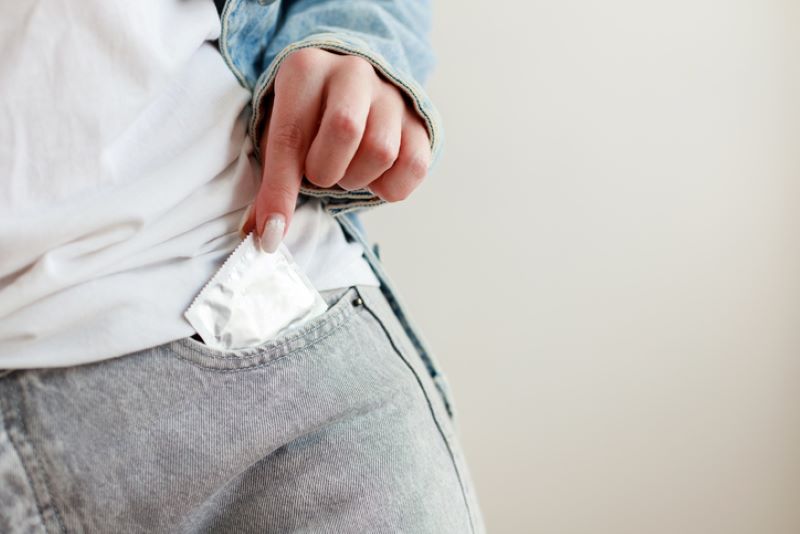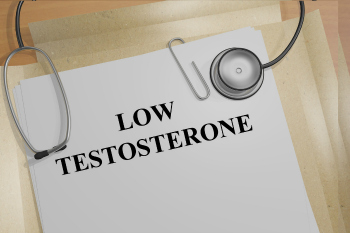The American Urological Association (AUA) is a professional organization for urologists. Founded in 1902, the organization now has over 21,000 members. One of its many roles is to provide guidelines on various aspects of urologic health so that doctors can best serve their patients.
In April 2018, the AUA issued a new clinical guideline for the diagnosis and treatment of testosterone deficiency. It includes 31 recommendations. We’ll unpack some of the highlights here today.
What is testosterone deficiency?
You have probably heard about testosterone in light of men’s sexual health. Produced by the testes, this hormone drives libido, gives men their physical characteristics (like facial hair), and helps maintain muscle mass.
Some men’s bodies don’t make enough testosterone. This situation, called hypogonadism, can happen when there are problems with the testes or the part of the brain that triggers testosterone production. Hypogonadism can also be a result of chemotherapy, radiation therapy, inflammation, infection, and obesity. (Learn more about the causes of low testosterone here.)
In addition, men’s bodies make less testosterone as they get older. In fact, testosterone levels drop from 1% to 3% each year after a man’s 40th birthday. As a result, some – but not all – men start to have symptoms like low sex drive, fatigue, moodiness, erectile dysfunction (ED), and diminished muscle mass.
How is testosterone deficiency diagnosed?
According to the new AUA guideline two criteria must be present for a man to be diagnosed with testosterone deficiency:
- His testosterone levels must be lower than 300 ng/dL. Two total testosterone measurements taken on two different occasions are recommended. Because men’s testosterone levels fluctuate throughout the day, early morning measurements are the rule of thumb.
- The man must exhibit symptoms of low testosterone, like the ones mentioned above – low libido, low energy, depression, ED, etc.
If a man meets only one of these criteria, then he does not have testosterone deficiency.
What is testosterone replacement therapy (TRT)?
Testosterone replacement therapy (TRT) is prescribed to some men with testosterone deficiency. This synthetic form of testosterone is typically administered through gels, patches, or injections.
What does the AUA recommend?
Some of the recommendations set forth by the AUA include the following:
- Clinicians should inform testosterone deficient patients that low testosterone is a risk factor for cardiovascular disease. Note: In 2015, the U.S. Food and Drug Administration (FDA) issued an advisory, expressing concerns that men who take testosterone might be at higher risk for heart attack and stroke. (Read more here.) However, the link to such events was considered controversial.
- Clinicians should inform patients of the absence of evidence linking testosterone therapy to the development of prostate cancer. Note: There have been concerns that testosterone therapy might lead to prostate cancer, but this link has not been proven. However, testosterone can fuel the growth of existing prostate cancer cells, so TRT is not usually recommended for men with prostate cancer.
- The long-term impact of exogenous testosterone on spermatogenesis should be discussed with patients who are interested in future fertility. Exogenous testosterone therapy should not be prescribed to men who are currently trying to conceive. Note: Testosterone is important for sperm production, but the synthetic form used in TRT might interfere with this process. Sometimes, sperm counts increase after men stop TRT, but this cannot be guaranteed. Men may decide to bank their sperm before starting therapy.
- Clinicians should discuss the risk of transference with patients using testosterone gels/creams. Men are advised to wash their hands thoroughly after applying testosterone to the skin to avoid transfer to another person. They should also cover the application area before sex. (For example, if testosterone is applied to the shoulder, wearing a T-shirt can reduce the risk of transferring the gel or cream to a partner.)
- Testosterone levels should be measured every 6-12 months while on testosterone therapy. Note: While on TRT, it’s important for men to see their doctor regularly for follow-up appointments so that testosterone levels can be assessed, and treatment can be adjusted, if necessary.
Is TRT right for you?
As mentioned above, our discussion here covers only some of the AUA’s recommendations. The guideline itself, along with a complete evaluation of your overall health, can help you and your doctor decide whether TRT is appropriate for you.
Resources
American Urological Association
“AUA Releases New Clinical Guideline For Diagnosis And Treatment Of Testosterone Deficiency”
(Press release. April 10, 2018)
“Evaluation and Management of Testosterone Deficiency”
(Published 2018)
http://www.auanet.org/guidelines/testosterone-deficiency-(2018)#x7647
International Society for Sexual Medicine
“Can testosterone replacement therapy (TRT) make a man infertile?”
http://www.issm.info/sexual-health-qa/can-testosterone-replacement-therapy-trt-make-a-man-infertile/
“What are some of the side effects and risks of testosterone therapy?”
MPR
“AUA: New Guidelines for Diagnosis, Management of Testosterone Deficiency”
(April 10, 2018)
SexHealthMatters.org
“What Causes Low Testosterone?”
(November 2, 2015)
https://www.sexhealthmatters.org/sex-health-blog/what-causes-low-testosterone
You may also be interested in...
Other Popular Articles

What Is Jelqing, and Does It Actually Work?
The term “jelqing” refers to a set of penis stretching exercises that some believe can make the penis bigger. Although the practice has gained attention and popularity in blogs and internet forums in recent years, there is no scientific evidence that it is an effective way to permanently increase the size of one’s penis. In fact, in some cases, jelqing may actually cause damage to the penis, so it is a good idea to get all the facts before setting off to try it.

What Is the Average Penis Size?
If you have ever wondered how your penis compares to others in terms of size, you are not alone. Many men are curious to know how their penises stack up compared to the average. Unfortunately, general curiosity can sometimes give way to full-on obsession and anxiety about penis size. This can be an unhealthy and often unnecessary fixation, especially because most men who think their penises are too small have perfectly normal-sized penises.

What Is Sensate Focus and How Does It Work?
Sensate focus is a technique used to improve intimacy and communication between partners around sex, reduce sexual performance anxiety, and shift away from ingrained, goal-oriented sexual patterns that may not be serving a couple.

What Is Edging and Why Do People Do It?
Edging is the practice of stopping sexual stimulation before reaching orgasm to prolong a sexual experience. The term stems from the concept of approaching the metaphorical “edge” of orgasm but stopping before going over the edge.

Can Sex Reduce Menstrual Cramps?
The SMSNA periodically receives and publishes ‘guest editorials.’ The current article was submitted by Mia Barnes, a freelance writer and researcher who specializes in women's health, wellness, and healthy living. She is the Founder and Editor-in-Chief of Body+Mind Magazine.
Having sex while you experience menstrual cramps is healthy and can provide significant benefits. While it might not be the first activity that comes to mind when your PMS or period cramping begins, many people enjoy sex to reduce menstrual cramps, experience increased pleasure and benefit from other advantages. Learn more about having sex while menstrual cramps are happening and how it can help your body.

Can Sex Throw off Your Vaginal pH Balance?
The SMSNA periodically receives and publishes ‘guest editorials.’ The current article was submitted by Mia Barnes, a freelance writer and researcher who specializes in women's health, wellness, and healthy living. She is the Founder and Editor-in-Chief of Body+Mind Magazine.
Your vagina is a pretty powerful organ. It is a pathway for menstrual blood and babies. It also is a main player in sexual intercourse. You might hear about your vagina’s pH and worry that yours is at risk. Here’s what to know about vaginal pH, including the impacts sex could have.


